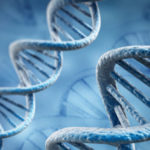 Technology
Technology  Technology
Technology  Our World
Our World 10 Ways Icelandic Culture Makes Other Countries Look Boring
 Misconceptions
Misconceptions 10 Common Misconceptions About the Victorian Era
 Mysteries
Mysteries 10 Strange Unexplained Mysteries of 2025
 Miscellaneous
Miscellaneous 10 of History’s Most Bell-Ringing Finishing Moves
 History
History 10 Great Escapes That Ended Right Back in Captivity
 Weird Stuff
Weird Stuff 10 Fascinating Things You Might Not Know About Spiders
 Food
Food 10 Everyday Foods You Didn’t Know Were Invented by the U.S. Military
 History
History 10 Odd Things Colonial Americans Kept at Home
 Weird Stuff
Weird Stuff 10 Superstitious Beliefs That Once Consumed Entire Cultures
 Technology
Technology 10 Scientific Breakthroughs of 2025 That’ll Change Everything
 Our World
Our World 10 Ways Icelandic Culture Makes Other Countries Look Boring
 Misconceptions
Misconceptions 10 Common Misconceptions About the Victorian Era
Who's Behind Listverse?

Jamie Frater
Head Editor
Jamie founded Listverse due to an insatiable desire to share fascinating, obscure, and bizarre facts. He has been a guest speaker on numerous national radio and television stations and is a five time published author.
More About Us Mysteries
Mysteries 10 Strange Unexplained Mysteries of 2025
 Miscellaneous
Miscellaneous 10 of History’s Most Bell-Ringing Finishing Moves
 History
History 10 Great Escapes That Ended Right Back in Captivity
 Weird Stuff
Weird Stuff 10 Fascinating Things You Might Not Know About Spiders
 Food
Food 10 Everyday Foods You Didn’t Know Were Invented by the U.S. Military
 History
History 10 Odd Things Colonial Americans Kept at Home
 Weird Stuff
Weird Stuff 10 Superstitious Beliefs That Once Consumed Entire Cultures
10 Unexpected Things Scientists Made Using DNA
Deoxyribonucleic acid, or DNA, holds the genetic information passed from parents to offspring. But researchers are driven by a bigger question—beyond inheritance, what more can you do with DNA? The results are mind-bending. From sperm plastic to woolly mammoth meatballs, here are ten projects that prove DNA is a freakishly malleable material.
Related: 10 Awesome New Discoveries About the Human Past from DNA
10 A Movie Inside Bacteria
In 2016, researchers stored 100 bytes of data inside E. coli cells. A year later, they decided to push the limits of that experiment—and with good reason. Cells can go where no human can, and if they could record and replay information like tiny GoPros, doctors might one day observe biological changes directly inside the body.
In 2017, the team succeeded by encoding five frames of Eadweard Muybridge’s classic Horse in Motion film into the DNA of an E. coli specimen. Each shaded pixel of the animation was translated into DNA code, which was then embedded into the bacteria’s genome using CRISPR gene-editing technology. Amazingly, the organisms passed the “movie” to their offspring, from which scientists later recovered about 90 percent of the images intact.[1]
9 The World’s Tiniest Antenna
When scientists unveiled the smallest antenna ever made in 2022, it wasn’t built from metal—it was built from DNA. The device measured only five nanometers long (one billionth of a meter). Rather than transmitting radio waves, the antenna tracked the movements of proteins inside living cells.
Proteins constantly change shape as they perform their work, but these shifts happen too fast to observe easily. The DNA-based antenna uses fluorescent light signals to record those changes in real time. By reading the color of the light that the antenna emits, scientists can track how specific proteins function—an innovation that could lead to more effective drugs and nanoscale medical devices.[2]
8 The Smallest Tic-Tac-Toe Board
Laboratory work doesn’t have to be boring. In 2018, scientists at Caltech played a microscopic game of Tic-Tac-Toe. It wasn’t a software simulation—it was built from DNA.
The technique behind it, called DNA origami, was invented years earlier to fold strands of DNA into specific nanoscale shapes. Caltech researchers had already used it to create the world’s smallest version of the Mona Lisa. But the Tic-Tac-Toe board had a clever twist: it was dynamic. Players could move their X’s and O’s by rearranging tiny DNA tiles, allowing the board’s pattern to change. The game took six days to complete, with player X ultimately winning.[3]
7 Folding DNA into a Masterpiece
A decade after DNA origami first emerged, scientists took it a step further. At Caltech, they recreated Vincent van Gogh’s The Starry Night at the nanoscale by folding a single DNA strand into precise shapes, stabilized by shorter strands acting like staples.
The experiment was more than art. Researchers used fluorescent molecules within microscopic light sources called photonic crystal cavities (PCC), allowing the miniature Starry Night to glow in different hues. This tiny masterpiece demonstrated how DNA origami could serve as a physical framework for future nanotechnologies—perhaps even molecular computers that process data using light.[4]
6 Rabbit/Plant Air Filters
Airborne toxins linger in nearly every home—not just chemicals from cleaners but also pollutants like chloroform and formaldehyde. Ordinary houseplants can absorb some contaminants, but only if you have several large plants per 100 square feet (9.3 m²). In 2018, the University of Washington revealed a bioengineered solution that could do the same work far more efficiently.
They modified a common houseplant, pothos ivy (Epipremnum aureum), with a rabbit gene called CYP2E1. This enzyme breaks down both chloroform and benzene, two of the most common household toxins. In lab tests, sealed containers filled with these gases showed dramatic reductions after three days and were nearly toxin-free after eight. The so-called “bunny ivy” isn’t a replacement for mechanical air filters, but it’s a promising step toward greener indoor air purification.[5]
5 New Viruses Created by AI
Imagine asking an AI model to design a biological virus—then watching that code come alive. In 2025, Stanford University researchers trained an AI system called Evo 2 on genetic data from bacteriophages, viruses that attack only bacteria. They asked the program to write entirely new viral genomes.
The AI sometimes “hallucinated,” but filters removed nonsense sequences. The scientists then synthesized stable DNA fragments and inserted them into E. coli cells. When the sequences were assembled correctly, they produced functioning bacteriophages that promptly killed their bacterial hosts.
Though still experimental, this AI-guided approach could revolutionize medicine. Designer phage therapies might one day combat antibiotic-resistant infections—a crisis projected to cause up to 10 million deaths annually by 2050.[6]
4 New Antibiotics from Extinct Humans
The fight against antibiotic-resistant bacteria doesn’t just rely on futuristic AI. In 2023, researchers turned to the past, searching for new antimicrobial compounds hidden in the genomes of extinct human relatives.
Using artificial intelligence, scientists examined DNA from Neanderthals and Denisovans, hunting for peptide sequences with potential antibiotic properties. Six promising molecules emerged—four from modern humans and one each from the two extinct species. Lab-synthesized versions were tested on infected mice. Some peptides halted bacterial growth but didn’t kill it, while others wiped out skin pathogens when given in high doses.
It’s early work, but these findings suggest that lost genes from humanity’s ancient cousins could help modern medicine fight the next generation of superbugs.[7]
3 Plastic from Fish Sperm
Biodegradable plastics are nothing new—cornstarch, algae, and wood pulp have all been used to replace oil-based materials. But in 2021, Chinese scientists unveiled a bioplastic with a much smaller carbon footprint and a very strange source: salmon sperm.
They fused strands of salmon DNA with a compound derived from vegetable oil, creating a jelly-like hydrogel. Once freeze-dried, the hydrogel could be molded into lightweight, rigid shapes. Unlike conventional plastics, it dissolves easily in water or with DNA-eating enzymes, reverting to its gel form.
The material’s simplicity and low energy cost make it a sustainable alternative for short-term packaging—though it probably won’t replace your water bottle anytime soon.[8]
2 A Mouse Made from Pre-Mammal Genes
The genes Sox and POU are essential for forming stem cells in mammals. But ancient versions of these genes evolved in single-celled organisms long before animals existed. In 2024, researchers decided to test just how ancient life’s blueprints really are.
They replaced the modern Sox2 gene in mouse stem cells with a primordial version found in choanoflagellates—tiny creatures that represent animals’ closest living single-celled relatives. Surprisingly, the ancient gene still worked. When the altered stem cells were inserted into a developing mouse embryo, they contributed to tissues in the resulting animal, producing a chimeric mouse with distinct patches of dark fur and eyes.
The experiment showed that the genetic toolkit for creating complex life existed nearly a billion years before multicellular animals ever appeared.[9]
1 A Woolly Mammoth Meatball
Woolly mammoths vanished after the last Ice Age, but their DNA lives on—and in 2023, it ended up in something no one expected: a giant meatball.
An Australian food-tech company specializing in lab-grown meat unveiled the creation at the Nemo Science Museum in the Netherlands. To make it, scientists synthesized mammoth myoglobin DNA—the protein responsible for meat’s flavor and color—and filled in missing sequences with genes from African elephants, the mammoth’s closest living relatives. The DNA was then inserted into sheep cells, which multiplied into billions of cells that formed the base for the meatball, roughly the size of a volleyball.
The massive morsel was slow-cooked and scorched with a blowtorch for display, filling the room with a surprisingly appetizing aroma. Nobody ate it, though. After 5,000 years without mammoth protein in the human diet, even its creators weren’t willing to risk the first bite.[10]








